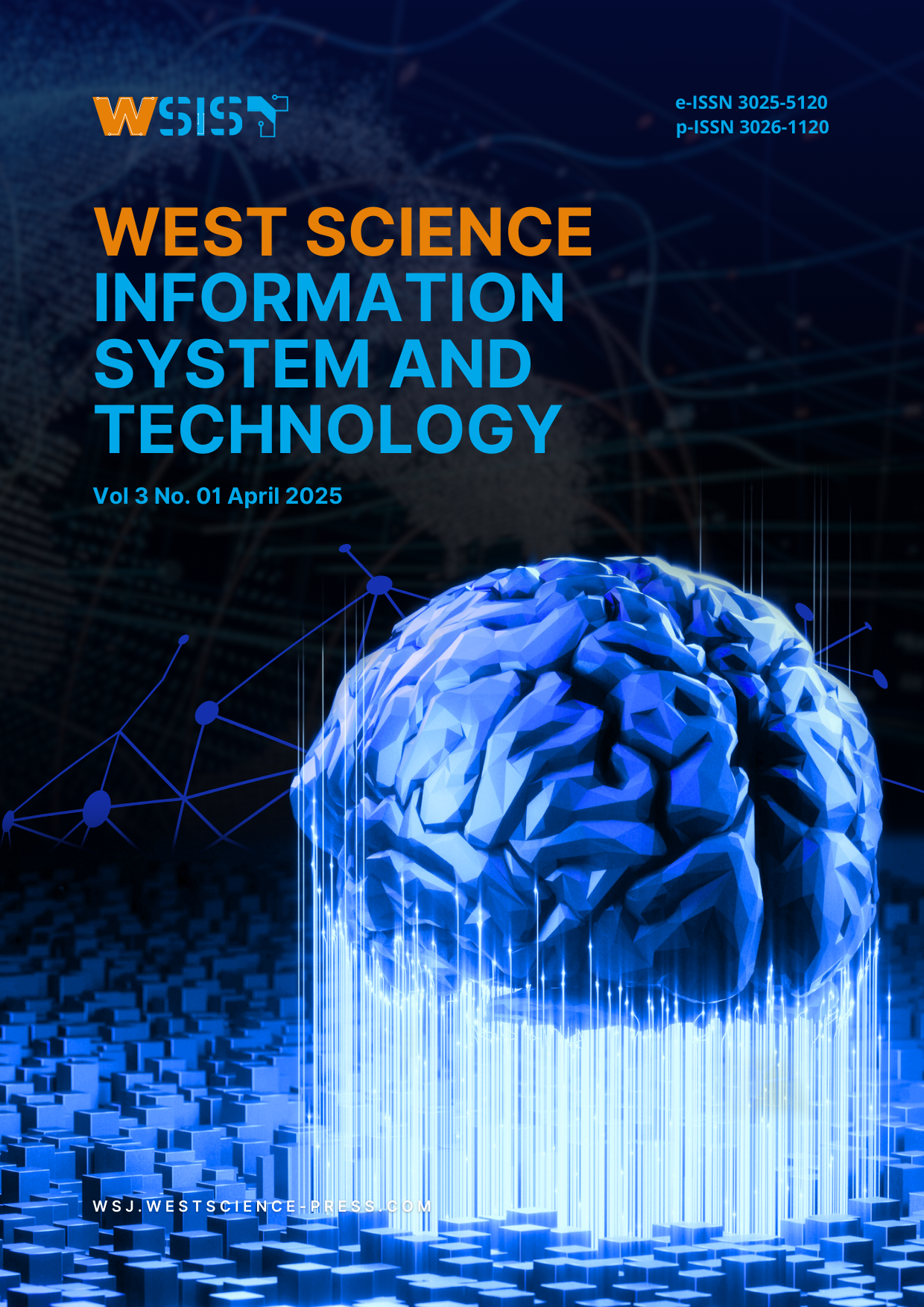Cyber Patrol and AI-Based Investigations to Disrupt Online Drug Transactions in Indonesia
DOI:
https://doi.org/10.58812/wsist.v3i01.1822Keywords:
Cyber patrol, Artificial intelligence, Online drug trafficking, Law enforcement technology, IndonesiaAbstract
The rise of online drug transactions in Indonesia presents significant challenges for law enforcement due to the anonymity and rapid communication enabled by digital platforms. This study explores the use of cyber patrols and artificial intelligence (AI) in combating these illicit activities, employing a qualitative approach with interviews from four key informants: a cybercrime police officer, a cybersecurity expert, a policy analyst, and an academic. The findings reveal that while cyber patrols serve as an essential tool in identifying and disrupting drug trafficking activities, their effectiveness is often limited by technological and operational constraints. AI emerges as a transformative solution, enabling advanced data analysis and predictive capabilities, though its implementation faces hurdles such as legal ambiguity and resource limitations. The study concludes with actionable recommendations, including increased investment in technology, capacity building, regulatory reforms, and fostering public-private and international collaborations. These strategies are crucial for strengthening Indonesia’s capacity to combat online drug trafficking and ensure a safer digital ecosystem.
References
[1] A. Erikha and A. Saptomo, “Dilemma of Legal Policy to Address Cybercrime in the Digital Era,” Asian J. Soc. Humanit., vol. 3, no. 3, pp. 499–507, 2024.
[2] J. Kolouch, CyberCrime. CZ. NIC, 2016.
[3] M. Nget, R. Sam, K. Im, S. Kheuy, D. Em, and H. Yoeng, “Cybercrime’s Global and National Dimensions: Policy Frameworks, Challenges, and Future Solutions,” 2024.
[4] M. R. Fairuzzen, A. A. Putra, A. Reihan, and L. P. SH, “Perkembangan Hukum dan Kejahatan Siber ‘Cybercrime’ di Indonesia,” Indones. J. Islam. Jurisprudence, Econ. Leg. Theory, vol. 2, no. 1, pp. 139–153, 2024.
[5] M. Tzanetakis and N. South, “Introduction: The digital transformations of illicit drug markets as a process of reconfiguration and continuity,” in Digital Transformations of Illicit Drug Markets: Reconfiguration and Continuity, Emerald Publishing Limited, 2023, pp. 1–12.
[6] R. Coomber, A. Childs, L. Moyle, and M. Barratt, “Social media applications and ‘surface web’mediated supply of illicit drugs: emergent and established market risks and contradictions,” in Digital Transformations of Illicit Drug Markets: Reconfiguration and Continuity, Emerald Publishing Limited, 2023, pp. 15–28.
[7] C. Wise and J. Bamford, “How online offenders evade detection,” in Understanding the Technology Behind Online Offending, Routledge, 2025, pp. 48–57.
[8] E. A. Usacheva, “THE INFLUENCE OF INFORMATION AND TELECOMMUNICATION TECHNOLOGIES ON THE ILLEGAL TRAFFICKING OF NARCOTIC DRUGS AND PSYCHOTROPIC SUBSTANCES: FORENSIC ANALYSIS,” Vestn. East Sib. Inst. Minist. Intern. Aff. Russ. Fed., vol. 0, no. 3, pp. 244–253, 2023.
[9] G. Bunea and I. M. Pop, “Some of the Modes of Operation Used by Drug Traffickers,” Cluj Univ. J. Interdisc. Soc. Sci. Humanit., vol. 2, p. 34, 2024.
[10] S. Raaijmakers, “Artificial intelligence for law enforcement: challenges and opportunities,” IEEE Secur. Priv., vol. 17, no. 5, pp. 74–77, 2019.
[11] I. Mademlis et al., “The invisible arms race: digital trends in illicit goods trafficking and AI-enabled responses,” IEEE Trans. Technol. Soc., 2024.
[12] F. O. Jejelola, “The Role of Artificial Intelligence in the Eradication of Transnational Crime,” Int. J. Res. Innov. Soc. Sci., vol. 8, no. 11, pp. 867–882, 2024.
[13] M. Senjaya, “Cyber Crime And Criminal Law In The Era Of Artificial Intelligence,” vol. 1, no. 4, pp. 268–276, 2024.
[14] M. Tzanetakis et al., “Drug Markets and Anonymizing Technologies,” AoIR Sel. Pap. Internet Res., 2018.
[15] M. Tzanetakis, S. A. Marx, and N. South, “The dark side of cryptomarkets: Towards a new dialectic of self-exploitation within platform capitalism,” Digit. Transform. Illicit Drug Mark., vol. 141, 2023.
[16] J. Martin, “Cryptomarkets and drug market gentrification,” in Digital transformations of illicit drug markets: Reconfiguration and continuity, Emerald Publishing Limited, 2023, pp. 127–139.
[17] E. S. Hasibuan, “The Role of Indonesian Police Through ‘Cyber Patrol’in Preserving and Maintaining Cyber Room Security,” Int. J. Soc. Serv. Res., vol. 2, no. 8, pp. 722–728, 2022.
[18] P. Gottschalk, Policing Cyber Crime. Bookboon, 2010.
[19] J. R. Lee, “Cyberpolicing,” in Oxford Research Encyclopedia of Criminology and Criminal Justice, 2022.
[20] K. S. Lakshmi, “AI in Digital Forensics,” in AI and Emerging Technologies, CRC Press, 2024, pp. 36–47.
[21] P. Khare and V. Raghuwanshi, “Navigating Emerging AI Technologies and Future Trends in Cybersecurity and Forensics,” in Digital Forensics in the Age of AI, IGI Global Scientific Publishing, 2025, pp. 321–346.
[22] Z. M. Correa and T. Y. A. Liu, “Harnessing the Power of Artificial Intelligence,” in Global Perspectives in Ocular Oncology, Springer, 2023, pp. 241–244.
[23] Y. Shamoo, “Cybercrime Investigation and Fraud Detection With AI,” in Digital Forensics in the Age of AI, IGI Global Scientific Publishing, 2025, pp. 83–114.
Downloads
Published
Issue
Section
License
Copyright (c) 2025 Ismail Ismail, Felecia Felecia, Anisa Kurniatul Azizah, Diana Rahmawati

This work is licensed under a Creative Commons Attribution-ShareAlike 4.0 International License.






















 Instagram
Instagram 